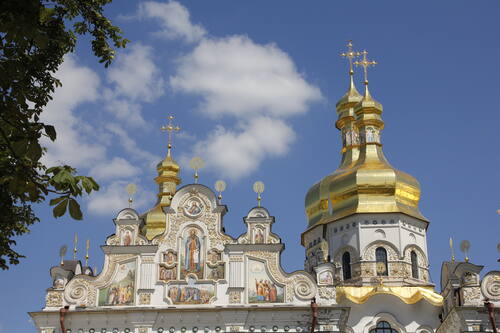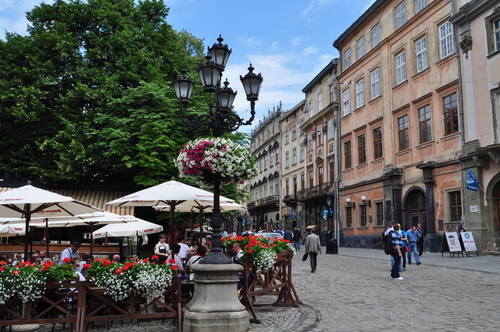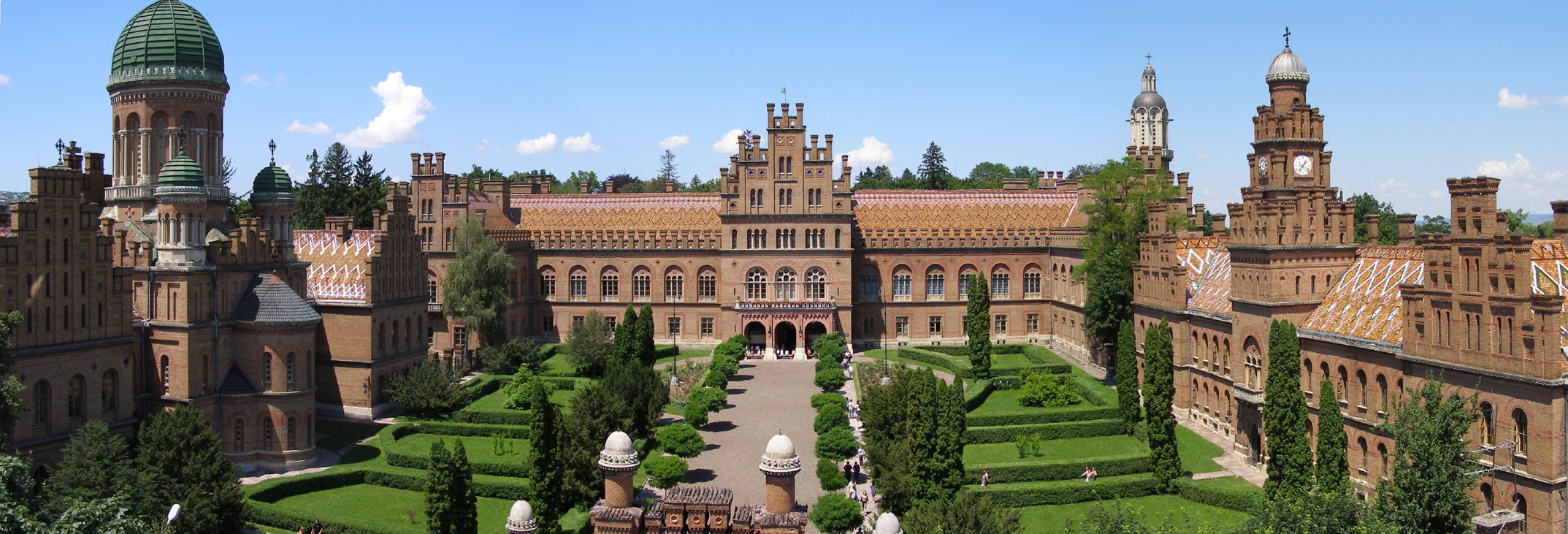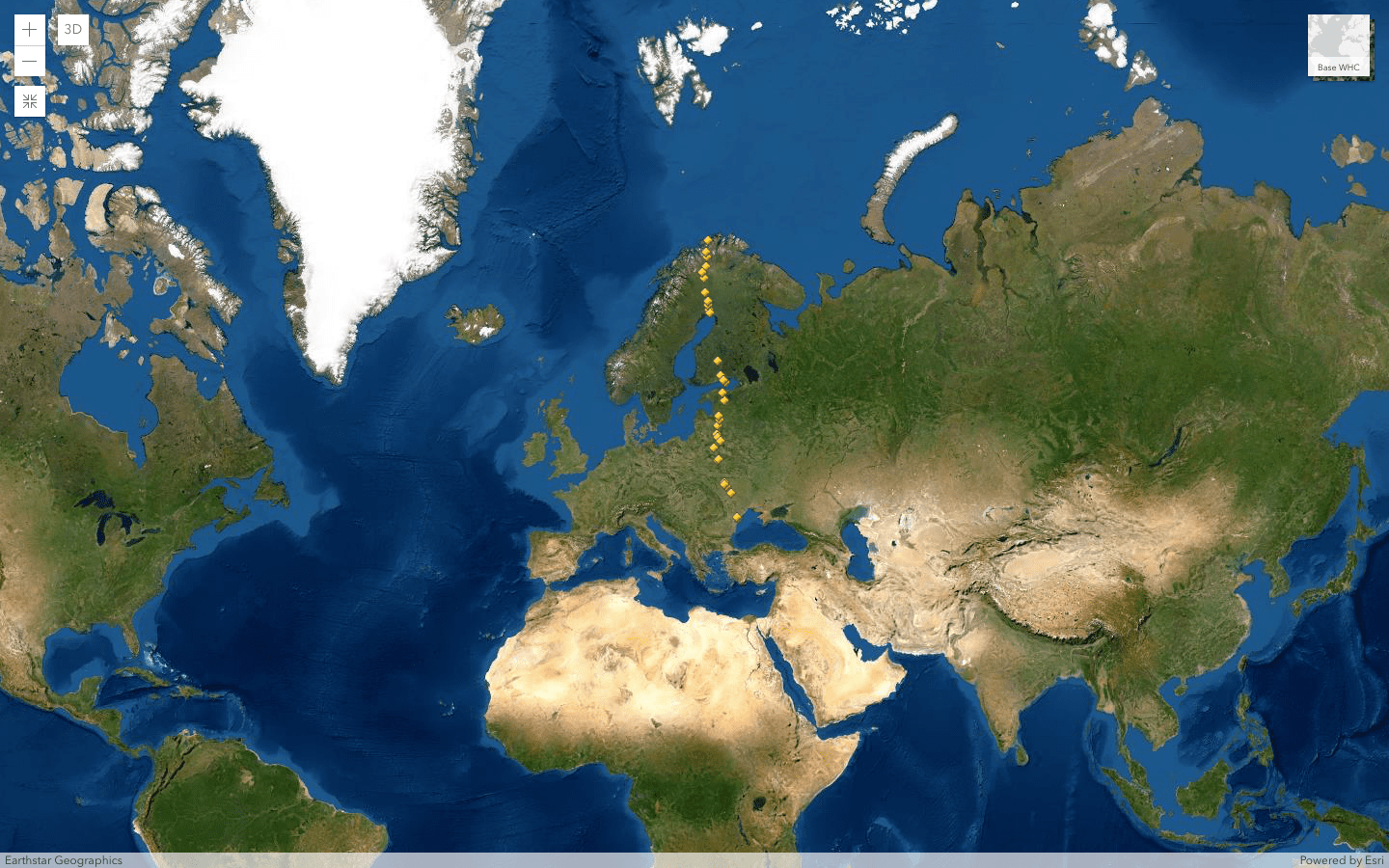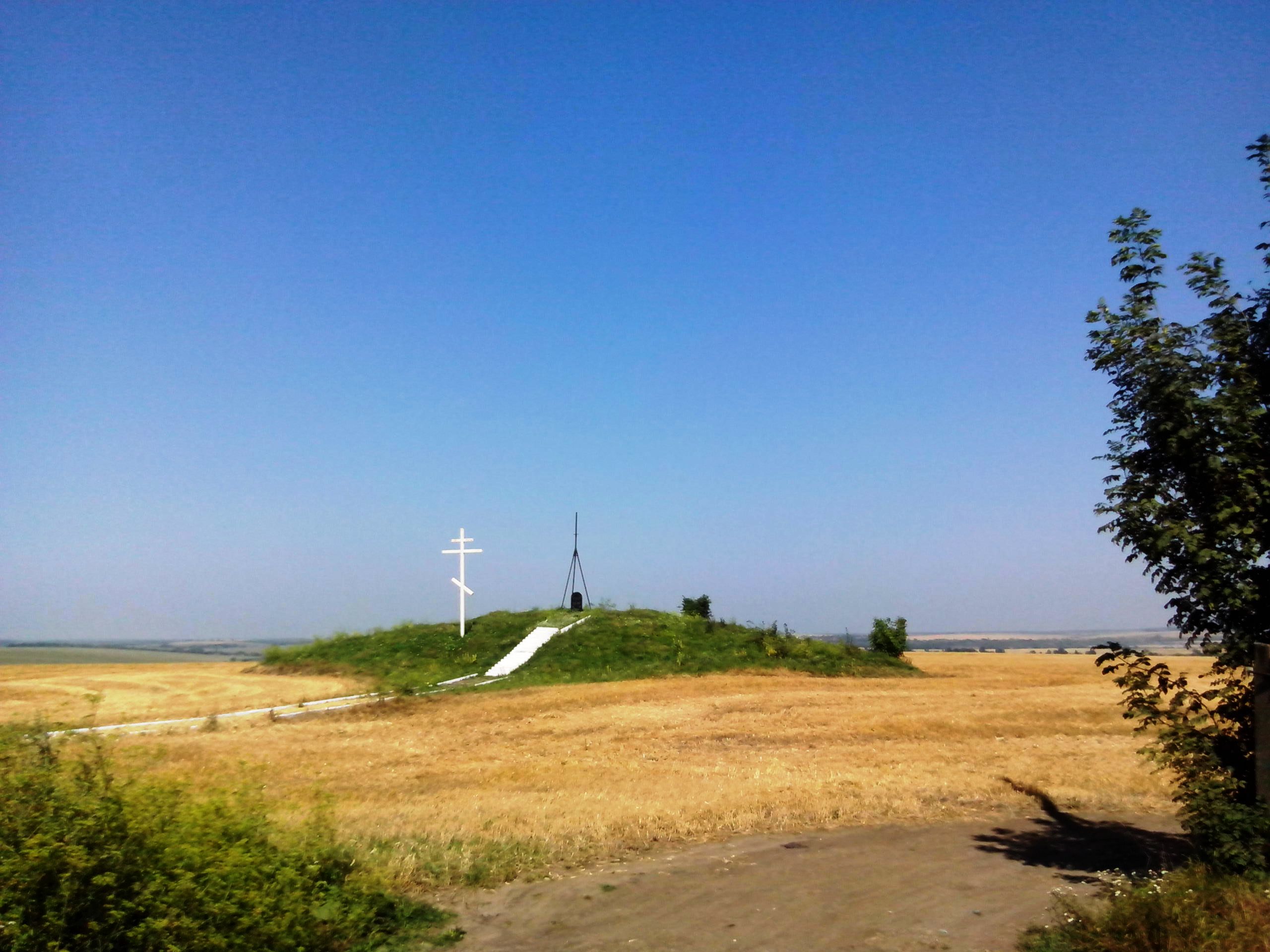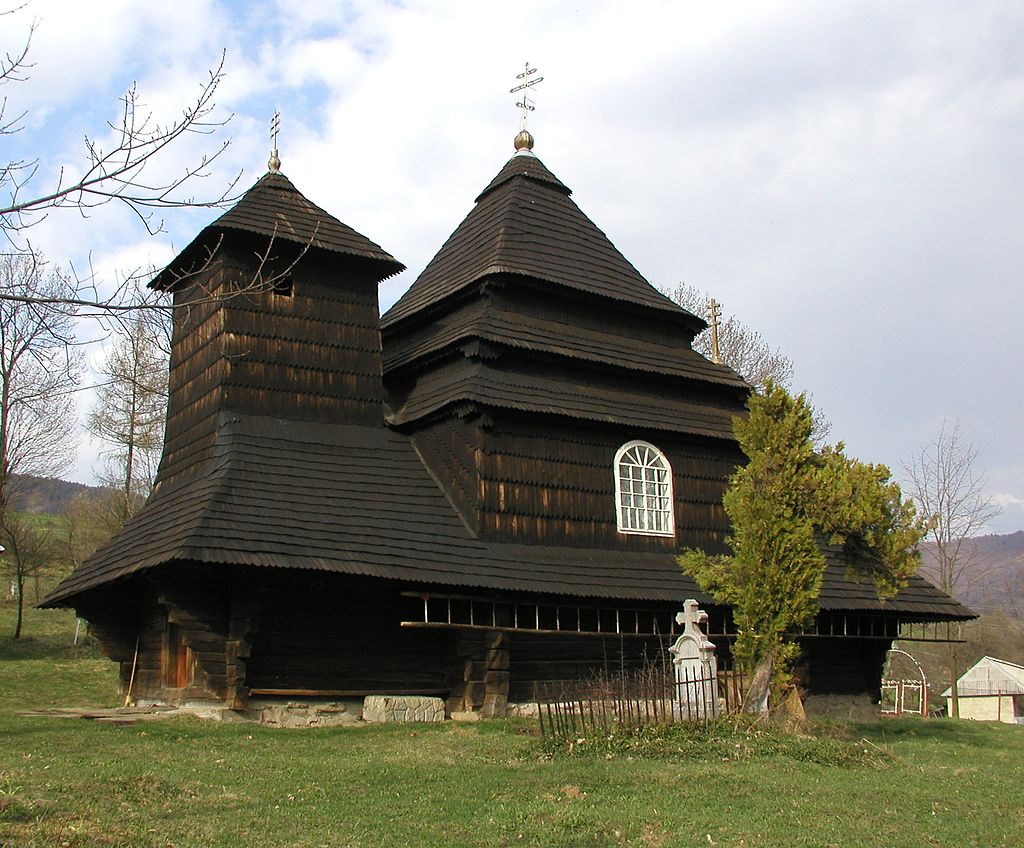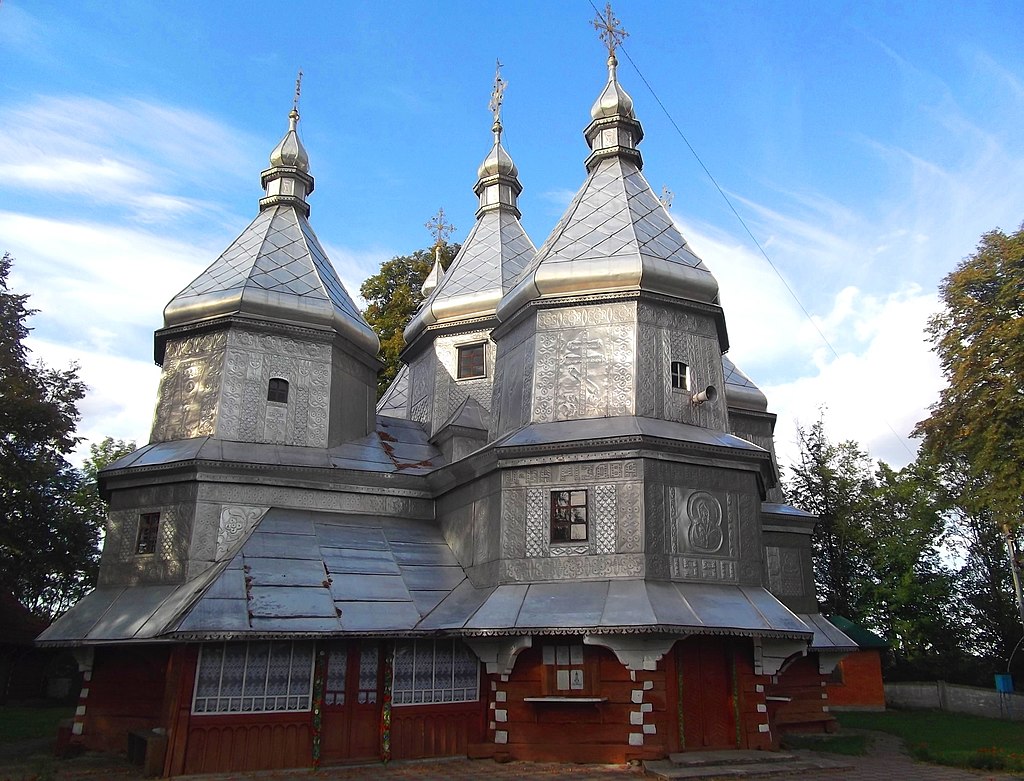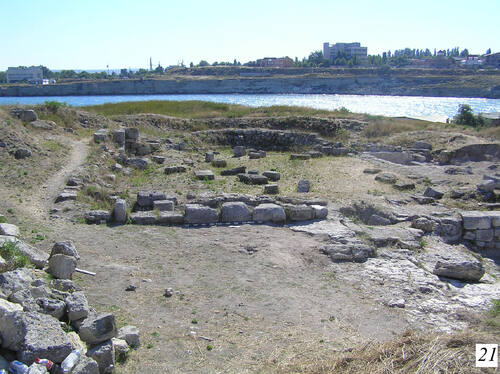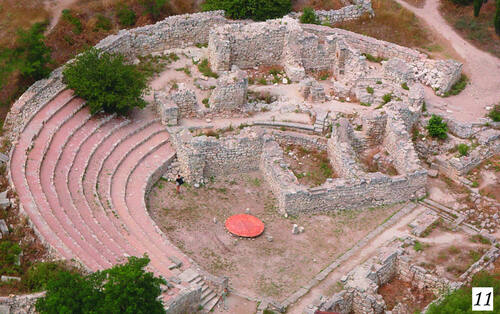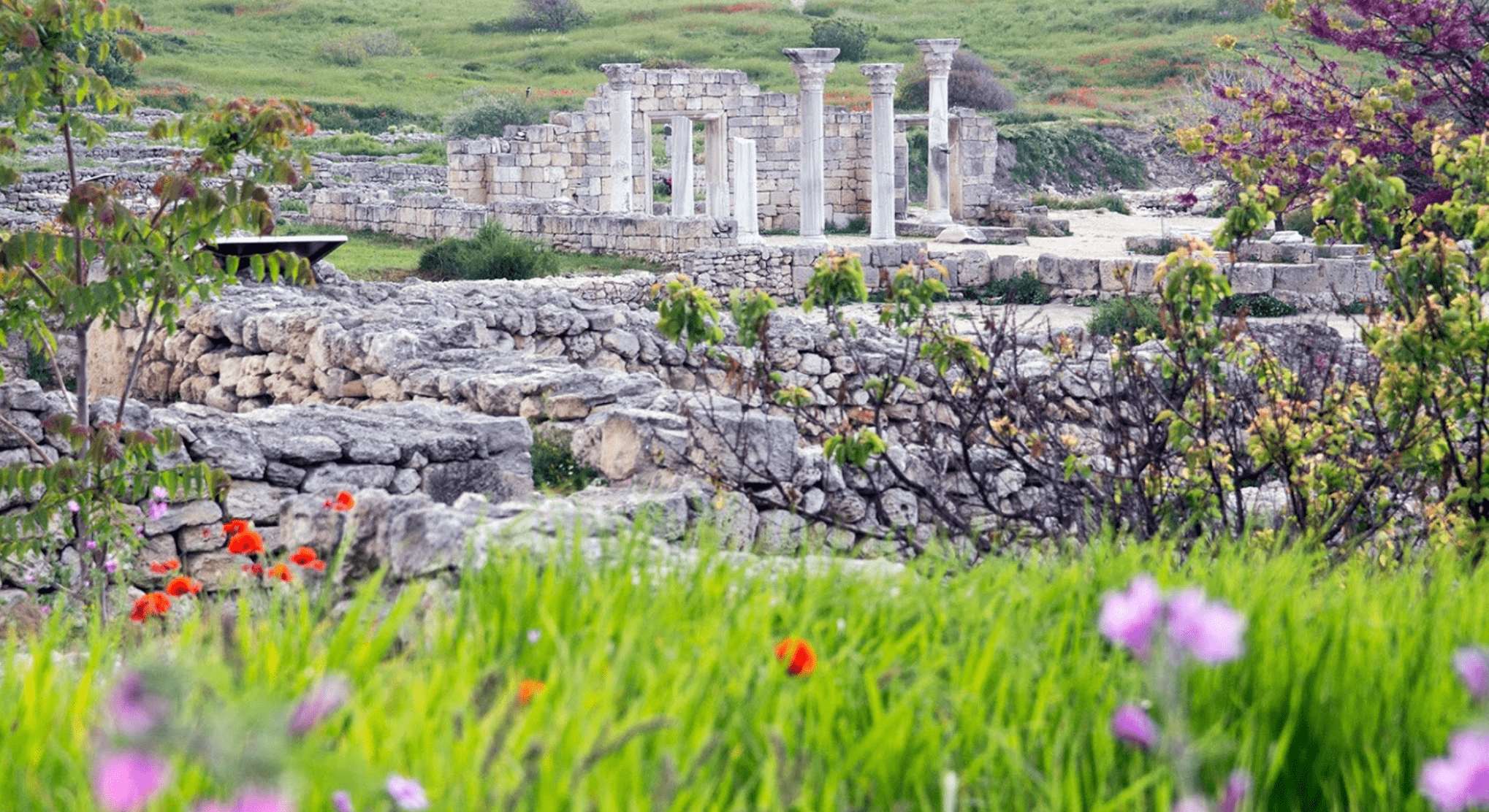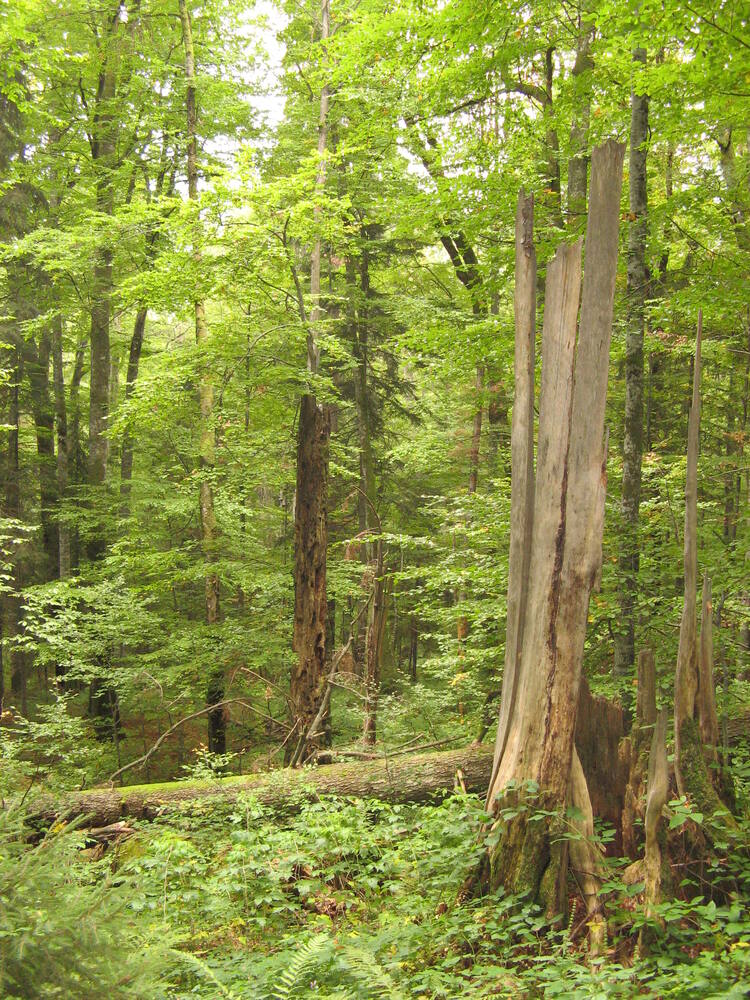Route of UNESCO sites in Ukraine: 7 places to visit
Half-millenary forests, unique churches, and a meridian that you can touch... On the occasion of the Day of Monuments of History and Culture, Rubryka has prepared a trip guide to UNESCO World Heritage Sites in Ukraine.

Today, April 18, is the International Day of Cultural Monuments and Outstanding Sites. We've celebrated this significant day in Ukraine for 22 years.
The World Heritage List includes 878 sites of outstanding universal value, including 679 objects of cultural, 174 of natural, and 25 objects of mixed heritage in 145 countries. As of 2021, six Ukrainian cultural sites and one natural site are on the World Heritage List, and another 41 are on the preliminary list for inclusion.
On the occasion of this day, we decided to talk about Ukrainian cultural monuments we think are worthy of being part of the world heritage, and why they're worth visiting, and how to get to them.
1. Kyiv: St. Sophia Cathedral, connected monastery buildings, and Kyiv-Pechersk Lavra, listed in 1990
In the UNESCO list, several objects can pass under one point, such as wooden churches in the Carpathian region or points of the Struve Geodetic Arc, which we'll discuss below. Therefore, the cathedrals built in Kyiv are united in one object as monuments that contributed to spreading the Orthodox faith in the territory of Kyivan Rus and are closely associated with Byzantium.
Thus, the Kyiv Cathedral of St. Sophia of the XI century, created to compete with the Cathedral of St. Sophia in Constantinople, symbolizes the "new Constantinople," the capital of the Christian principality of Kyiv.
Kyiv-Pechersk Lavra had an intellectual influence and contributed to spreading Orthodoxy in the XVII-XIX centuries. The complex includes unique surface and underground churches of the XI-XIX centuries, labyrinthine caves over 600 meters long, as well as outbuildings of the XVII-XIX centuries. The main monuments of the ensemble are the Dormition Cathedral, the Gate Church of the Trinity, the Great Bell Tower, the Church of All Saints, the Refectory Church, the monastery defensive walls with towers, the Refectory chambers with Churches of Saint Anthony and Saint Theodosius, the Church of the Exaltation of Cross and the Church of the Nativity of the Virgin, and the Church of the Saviour at Berestove.
The architectural ensemble acquired a modern look as a result of construction works of the XVII-XVIII centuries during the heyday of the Ukrainian Baroque, while the monument hasn't lost its historical value, as all the built elements have been restored using original materials. Reconstruction work in Saint Sophia was even awarded the European Gold Medal for the Protection of Historical Monuments in 1987.
- How to get there: a tour of the cathedrals, monasteries, and churches of the capital might be the primary reason for foreigners engaged in cultural tourism visiting Kyiv. Whatever route you choose, and whichever monument you start your walk with, you'll make a circle around the historical part of Kyiv, enjoying the panoramas and views of the city.
2. Lviv: Ensemble of the historical center, included in the list in 1998
The city of Lviv, founded in the late Middle Ages, has been a thriving administrative, religious and commercial center for several centuries. Its medieval urban topography has been preserved almost in its original form, along with many beautiful buildings in the Baroque style and later times. All this allows us to trace the habitats of different ethnic communities, learn about the life of long-gone residents, and the social structure of their lives. The historic center is that exact square in front of the town hall where tourists first go and the adjacent streets, which are so nice to walk every time you get to Lviv.
For some time the center was at risk because the integrity of the ensemble was vulnerable to destruction, uncontrolled construction, and excessive traffic, but the monument was still saved and now each of us can immerse ourselves in the atmosphere of a medieval city just by picking up a train ticket.
UNESCO has certain criteria that a site must meet to be protected under World Heritage. One of such criteria is the object's authenticity, i.e. its correspondence to the original form in which the object existed a century ago. It's believed that the authenticity of the building in Lviv's historic center is very high, as not only architecture was preserved but also relief remained: hills, plateaus, and river valleys. It's important because the landscape continues to illustrate the traditional relationship between a fortified castle built on a hill and the city below. Moreover, urban planning has been preserved in medieval street style, squares, large churches, and ethnic communities. Numerous fires in 1527 and 1571 didn't even prevent this, as well as the possible redevelopment of the apartments; original interior materials, murals, stained glass, and exterior ornaments are preserved. This is also evident in the exterior brick and large stone blocks used in construction.
Over time, there was a certain loss of urban structure, mainly during World War II. However, the individual addition of the later buildings of the Ukrainian secession and modernism organically fit into the existing ensemble.
- How to get there: go to Lviv and then follow the flow of tourists. All of them are concentrated in a small area, where you can spend hours in the streets.
3. Chernivtsi: Residence of Bukovinian and Dalmatian Metropolitans, included in the list in 2011
The architectural ensemble, within the city of Chernivtsi, on the beak of the Domnik River, includes the Metropolitan's Residence with the Chapel of St. John of Suceava, a seminary and a spiritual church, as well as a monastery with a clock tower in the garden and landscape park. Today, Yurii Fedkovych National University of Chernivtsi is located here. Students can absorb knowledge surrounded by ancient paintings, mirrors, and other elements of the interior, preserved from the past.
The residence with an impressive combination of architectural elements is the cultural identity of the Orthodox Church of the XIX century in the Austro-Hungarian Empire in a period of religious and cultural tolerance. In the nineteenth century, the architecture of historicism could convey information about its purpose, and the residence of the metropolitans of Bukovina and Dalmatia is now a confirmation of this.
The object is under UNESCO protection, as many of its objects meet the criterion of historical authenticity: there's a wooden ceiling of the original shape in the Synod Hall, and the roof of the building, although renovated, made from original samples and brought from Austria. The change in the ensemble's function, which was originally the residence of the metropolitans and became a university, according to experts, didn't affect its authenticity.
- How to get there: The former residence is located in the heart of Chernivtsi. They usually hold excursions, but now, in quarantine, you can admire the current university only from the outside.
4. Struve geodetic arc, listed since 2005
The Struve Arc is something special: by touching one of its constituent elements, you can literally touch the meridian that surrounds our planet. It's a chain of triangulation points that stretches for 2,820 km across ten European countries, from Hammerfest in Norway to the Black Sea.
The checkpoints were put in 1816-1855 by the astronomer Friedrich Georg Wilhelm Struve (aka Vasyl Yakovlevych Struve), who performed the first reliable measurement of a large segment of the Earth's meridian arc. This allowed us to accurately determine the size and shape of our planet, which was an important step in the development of Earth sciences and topographic mapping.
An exceptional example of scientific cooperation between scientists from different countries and between ruling monarchs has been partially preserved and has survived to this day. Initially, the "arc" comprised 258 geodetic "triangles." The World Heritage Site includes only 34 items that have survived to the present day. There are four points in Norway, four in Sweden, six in Finland, two in Russia, three in Estonia, two in Latvia, three in Lithuania, five in Belarus, one in Moldova, and four in Ukraine.
Some are carved into the rocks, others look like iron crosses, stone pyramids, or obelisks. All points are stored in their original location, and changes are limited to some later constructions that correspond to the previous location.
The checkpoints of the Struve arc in Ukraine are "Katerynivka," "Feldshtyn" and "Baranivka"; granite signs indicate the name of the point and its coordinates. The point "Stara Nekrasivka" is a cast-iron quadrangular obelisk on a stone foundation.
- How to get there: Finding checkpoints is most convenient by coordinates, traveling by car. Quite an interesting experience, creating a route that runs directly along the meridian. It must pass through these points:
| Katerynivka | N49 33 57.00 E26 45 22.00 |
| Feldshtyn | N49 19 48.00 E26 40 55.00 |
| Baranivka | N49 8 55.00 E26 59 30.00 |
| Stara Nekrasivka | N45 19 54.00 E28 55 41.00 |
5. Wooden churches of the Carpathian Region in Poland and Ukraine, included in the list in 2013
Sixteen churches, built of horizontal wooden logs between the 16th and 19th centuries, are located in the eastern part of Europe. Churches testify to a special building tradition, which has its roots in Orthodox church design and is intertwined with elements of local tradition and symbolic references to the cosmogony of their communities.
The churches are considered authentic in terms of location, preserved interior and exterior, as well as the use; 13 churches still function as churches, the other three, Radruts, Rohatyn, and Drohobych, are preserved as museums. Wooden structures have been carefully repaired with traditional methods for many years, and wooden tile roofs and wall cladding, which require replacement every 20-30 years, have been properly restored in most cases.
By the way, pay attention to the entrances to the church, if you decide to visit one of them; almost every one of them has preserved the original doors and locking devices. The lintels have inscriptions with the dates of construction and even the names of carpenters.
- How to get there: churches are located in different regions of Ukraine, it's almost impossible to visit them all in one trip, but it's still possible to add an interesting point to your route by planning a vacation in any of the regions.
The Church of St. Michael, built in 1745, is located in the village of Uzhok, Zakarpattia region; in the same region, in the village of Yasinia, you can visit the Church of the Ascension, which was opened almost 200 years ago, in 1824.
In the Lviv region, don't miss the opportunity to look at the Church of the Holy Trinity in Zhovkva, dated 1720, the Church of the Holy Spirit in Potelychi, built in 1502; in Matkov, the Church of the Cathedral of the Blessed Virgin, built in 1838, and directly in Drohobych, there's the Church of St. George, built in 1656.
The oldest Church of the Holy Spirit in 1481 is located in Rohatyn, Ivano-Frankivsk region, in the same place, but in the village of Nyzhniy Verbizh, there's the Church of the Nativity of the Blessed Virgin, built in 1756-1808.
6. Crimea: The ancient city of Chersonesus Tavria and its chorus, included in the list in 2013
We couldn't ignore Crimea, and although a trip to the occupied peninsula can be dangerous, we cannot forget about the Ukrainian Chersonesus. At this place, there are the ruins of a city founded by the Dorian Greeks in the V century BC on the northern shore of the Black Sea. It includes six plots with ancient urban ruins and farmland, divided into several hundred choirs, rectangular plots of equal size. The plots housed vineyards and their products were exported to the city, prospering until the XV century. There are several complexes of public buildings and residential neighborhoods, early Christian monuments, the remains of settlements of the Stone and Bronze Ages, Roman and medieval tower fortifications and water supply systems, as well as exceptionally well-preserved examples of vineyards and partitions.
In the third century AD, this place was known as the most productive wine center of the Black Sea and remained a center of trade between the Greek, Roman, and Byzantine empires and the population north of the Black Sea. This is an outstanding example of an ancient polis that reflects the social organization of the city.
- How to get there: The ruins of the ancient city are located in the occupied Crimea, within the city limits in Sevastopol, and getting to the monument from the station or another part of the city by any public transport will not be easy if you get to the peninsula.
7. Ancient and pristine beech forests of the Carpathians and other regions of Europe, various regions were included in the list of protection in 2007, 2013 and 2017
Beech forests cover more than 12 countries. Since the end of the last ice age, European beech has spread from several isolated areas in the Alps, the Carpathians, the Dinarides, the Mediterranean, and the Pyrenees in a relatively short period of time, several thousand years. This process continues to this day. Distribution across the continent is associated with the adaptation and resistance of the tree to different climatic, geographical, and physical conditions.
Initially, when included in the UNESCO list in 2007, the site included only a protected area located in the Carpathians in the Prešov Region in Slovakia and Zakarpattia in Ukraine, 4 and 6 forests, respectively. In 2011, 5 beech forests in Germany were included in the site, and in 2017, the site was expanded even more radically: 39 forests were included in 10 countries (Austria, Albania, Belgium, Bulgaria, Spain, Italy, Romania, Slovenia, Croatia, as well as added forests in Ukraine).
In beech forests, nature has retained its original appearance, the trees there are 30-50 meters high and about 300-400 years old, and one of the oldest specimens is half a millennium. The girth of some tree trunks can reach up to 2.5 meters in diameter. Just think what a centuries-old history they can keep on their rings.
- How to get there: The list includes the national nature parks "Synevyr," "Zacharovanyi Krai" and "Podilski Tovtry" and nature reserves "HorHany" and "Roztochchia." You can get to the reserves by car, and then, on foot. Mountain roads aren't always pliable for city motorists, so comfortable shoes and a reserve of strength is something you can not do without.


